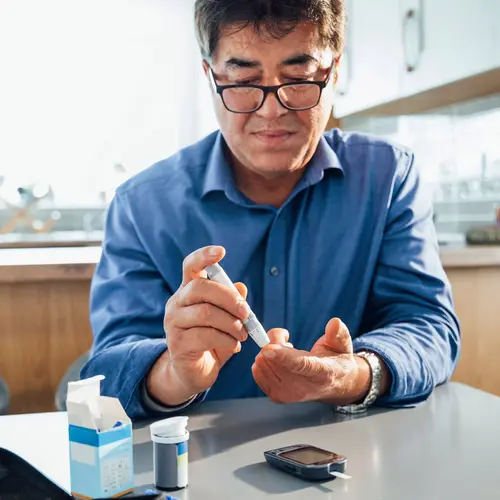Some heart tests, such as an electrocardiogram (EKG), record a few seconds of your heart's electrical activity. In some cases, your doctor may recommend using a Holter or event monitor. You wear these for more than a day, and even while you sleep. These portable devices record your heart’s activity for days or weeks at a time. Here’s how each monitor can help you and what you need to know.
Holter Monitor
A Holter monitor records your heart activity nonstop for a day or two. You wear it as you go about your usual activities and overnight.
Your cardiologist, or heart doctor, may order it for you if your heartbeat is too fast or too slow, or if it feels like it skips a beat. If you have symptoms like low blood pressure, dizziness, and shortness of breath, your doctor may want you to wear one. You may have had an EKG but it didn’t show why you have these symptoms. Your heartbeat could even be normal. Or your doctor wants you to wear a Holter monitor because you’ve been diagnosed with a heart condition. That makes you more likely to have an irregular heartbeat.
Other reasons you may need a Holter monitor include:
- Chest pain
- Test if your pacemaker works
- Find out if your treatment works
Talk to your doctor about how to prepare for a Holter monitor. In general, you do not need to stop eating or drinking to get ready. You’ll go to your doctor’s office to set up the monitor.
The monitor looks like a small box with sensors, or wires, attached to it. You can put it in your pocket or wear it over your shoulder, like a bag. The wires are attached to electrode patches that are stuck to your chest and stomach. You’ll need to take off your clothes from the waist up for your doctor or technician to attach them.
Go back to your normal activities and keep a notebook to record what you do. Write down dates and times. This helps your doctor understand which things cause your heartbeat to change rhythm. You won’t take it off for the entire time. This includes when you sleep. But these monitors can’t get wet. So it’s a good idea to bathe before you get it.
Your doctor gets the information about your heart activity when you return the monitor. It’s printed out and reviewed along with your notebook of daily activities. This may take a few days.
Event Monitor
This is also a heart monitor that you wear as you go about your day-to-day activities. It’s powered by batteries. But it doesn’t record your heart’s activity nonstop. You activate it when symptoms start. Some can pick up an irregular heartbeat and start to record on their own. You’ll wear it typically for two to four weeks.
Your doctor can show you how to use it. Like a Holter monitor, sensors are stuck to your chest and stomach. Clean and shave that area. You can place the monitor in your pocket or purse. It records for a few minutes at a time. Stay still for the monitor to get a true recording. Electrical devices, like cell phones and electric toothbrushes, can get in the way of the reading. Stay 6 inches away from them while your monitor records. Keep a log of your activities when symptoms start and include the date and time. And take off the event monitor when you shower or swim.
There are a few different types of event monitors:
- A symptom event monitor starts to record when you turn it on.
- A memory looping monitor picks up your heart’s electrical activity a few minutes before and after your symptoms start. With both, the information goes directly to your doctor to review.
You may have symptoms like dizziness and chest pains. You may feel like you could faint. Other reasons your doctor may prescribe an event recorder include:
- Symptoms come and go
- It’s unclear if your medications work
- Other tests didn’t show the cause of your symptoms
Your health insurance should cover the cost of Holter and event monitors if your doctor recommended their use. It’s a good idea to check on that ahead of time. They may want to give pre-approval.

